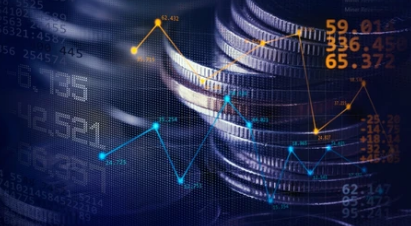Cryptocurrency markets are known for their volatility, rapid price swings, and unpredictable movements. For beginners, these fluctuations may seem random, but seasoned traders know that crypto—like traditional financial markets—moves in cycles. Understanding these market cycles can help investors anticipate trends, avoid costly mistakes, and seize profitable opportunities.
In this guide, we’ll break down what market cycles are, how they apply to cryptocurrency, and how you can use them to become a smarter, more disciplined trader.
What Are Market Cycles?
A market cycle is the natural progression of prices in financial markets, moving through phases of growth, peak, decline, and recovery. These cycles are influenced by human psychology, investor sentiment, supply and demand, and external factors like regulations or global events.
While traditional markets may take years to complete a full cycle, cryptocurrency cycles are often faster and more extreme due to high volatility and 24/7 trading.
The Four Phases of a Crypto Market Cycle
1. Accumulation Phase
- Prices are relatively low and stable after a major decline.
- Market sentiment is neutral or bearish—most retail traders have lost interest.
- Long-term investors and institutions begin quietly buying.
- Trading volumes are low, but smart money positions itself early.
Investor mindset: Skepticism, doubt, or lack of attention.
2. Uptrend / Bull Market Phase
- Prices begin rising steadily as demand grows.
- Positive news, adoption, and social media hype fuel optimism.
- Retail investors re-enter the market, fearing they’ll miss out.
- Trading volumes surge as new participants flood in.
Investor mindset: Confidence, excitement, and eventually FOMO (Fear of Missing Out).
3. Distribution Phase (Market Peak)
- Prices hit new highs and volatility increases.
- Early investors and institutions start selling to take profits.
- Retail traders continue buying, believing prices will keep climbing.
- News is overwhelmingly positive, but warning signs of exhaustion appear.
Investor mindset: Euphoria, overconfidence, and greed.
4. Downtrend / Bear Market Phase
- Prices decline sharply as selling pressure increases.
- Negative news, scandals, or regulations fuel FUD (Fear, Uncertainty, Doubt).
- Many traders sell at a loss, while long-term holders endure.
- Market interest fades, and trading volumes drop.
Investor mindset: Fear, panic, and capitulation (selling everything at the bottom).
Eventually, the market stabilizes, leading back into the accumulation phase, and the cycle begins again.
Investor Psychology in Market Cycles
Market cycles are not just about numbers—they’re driven by human emotions. Common psychological stages include:
- Disbelief (at the bottom): “Crypto is dead.”
- Hope (early uptrend): “Maybe it’s recovering.”
- Optimism: “This is the start of something big.”
- Euphoria (peak): “This time is different—I’ll be rich forever.”
- Anxiety: “Why is the price dropping?”
- Panic: “I need to sell before I lose everything.”
- Capitulation (bottom of bear market): “I’ll never touch crypto again.”
Recognizing these emotions in yourself and the market helps you trade more rationally instead of being swept away by the crowd.
Examples of Crypto Market Cycles
Bitcoin 2017 Bull Run
- Bitcoin rose from under $1,000 to nearly $20,000.
- Extreme hype around ICOs and media coverage fueled euphoria.
- The cycle peaked in December 2017 before crashing into a prolonged bear market.
Bitcoin 2020–2021 Bull Run
- Bitcoin surged from $4,000 in March 2020 to over $69,000 in November 2021.
- Institutional adoption, DeFi growth, and NFTs fueled optimism.
- In 2022, the market entered a bear phase, with Bitcoin dropping below $20,000.
These examples show how patterns repeat, even if the details differ.
How to Use Market Cycles in Your Strategy
1. Buy in the Accumulation Phase
Smart investors accumulate during quiet periods when prices are low and interest is minimal.
2. Ride the Bull Market—But Take Profits
During uptrends, prices rise quickly, but taking profits gradually prevents losses when the trend reverses.
3. Be Cautious in the Distribution Phase
When hype is at its peak, risk is highest. Don’t let greed cloud your judgment.
4. Survive the Bear Market
Bear markets test patience. Instead of panic-selling, focus on research, dollar-cost averaging, and long-term strategies.
Tips for Beginners to Navigate Market Cycles
- Avoid chasing hype. If everyone is talking about a coin, it may already be overpriced.
- Use dollar-cost averaging (DCA). Invest small amounts regularly instead of trying to time the market.
- Diversify. Spread investments across Bitcoin, Ethereum, altcoins, and stablecoins.
- Set stop-loss and take-profit orders. Protect your capital from emotional decisions.
- Keep emotions in check. Recognize FOMO and FUD when they arise.
- Follow the big picture. Focus on long-term adoption and technology, not just daily price moves.
Final Thoughts: Mastering Crypto Market Cycles
Crypto markets may seem chaotic, but they follow recognizable cycles of accumulation, growth, distribution, and decline. By understanding these patterns, traders can make smarter decisions, avoid emotional mistakes, and position themselves for long-term success.
The key is not to predict every move perfectly, but to recognize where the market is in the cycle and adjust your strategy accordingly. In crypto, patience, discipline, and knowledge of cycles often separate successful investors from those who exit in frustration.





